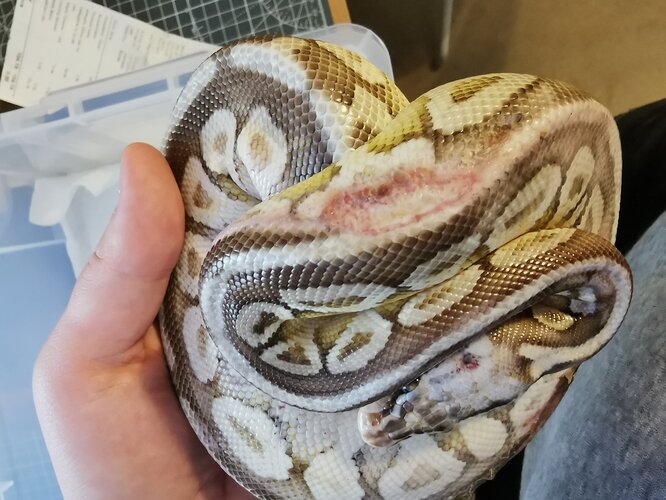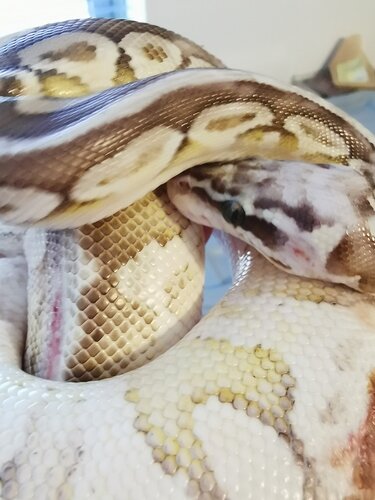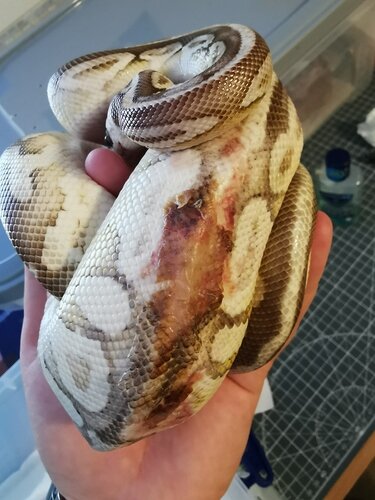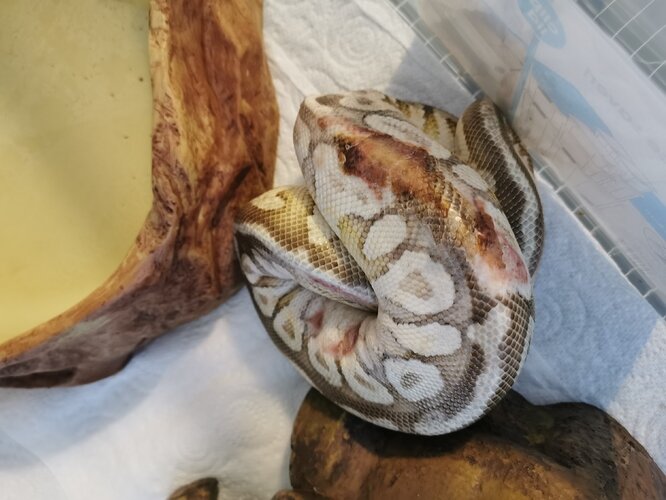That’s another thing though. You always have to take a pet stores care with a grain of salt. They usually get a couple of things off when it comes to care. Many say use aspin for bp’s which is a bad idea and some also say use sand for leopard geckos which is a whole other topic for another time but you get my point. They aren’t reliable
Well considering I’ve now had access to a community of seasoned keepers, I do see that heat mats may be the best way to go. But you can understand my confusion in your statement here
When I hadn’t said anything about my breeder’s approval up until this point.
Yes heat mats would be the best way to go. To prevent something like this from happening again I highly recommend a thermostat with a heat control. It will shut off the mat if it gets above a pre set temp and will turn it back on once its cooler. Pretty ingenious device if u ask me
I assumed the breeder you mentioned in that post above that said UVB wasn’t necessary was the one you bought the snake from. My bad.
but I guess the point was you got that advice before you even got the snake. If you got mixed advice I can see what you’re saying though different people saying different things could be confusing.
I’m sorry if this is coming off as attacking I don’t want it to. I was waiting for a few weeks for someone else to mention the bulb and no one did so I wanted to at least have a discussion to see if most people would agree that a different method would be safer.
I had entirely been going off of the RSPCA’s care sheet, the care sheet provided by my reptile insurance (exoticsdirect), multiple other care sheets from many online sources and blogs. My confusion also primarily stemmed from the fact that quite a few care sheets listed both heat mats and bulbs as acceptable heating methods. If I hadn’t been confident in my setup I certainly wouldn’t have let my snake live in it.
I hadn’t gotten him from them, but that post was also only regarding a UVB/A😅
Ok fair enough. That’s my bad.
Also not that you would be able to know this before the fact but The RSPCA probably knows jack about reptiles compared to some of the folks on here lol.
This is gonna be a long thread for sure lol. Well you definitely have my help/support if ever necessary and like @thecrawdfather said please dont take this as a attack. I just wanna see your little dude get better and go on to continue doing snake things!
Same here .
I will add my 2 cents it’s not about how you provide heat but it is about providing proper temps and do so in a safe manner we all do it in different ways (I for example only offer a hot spot with heat tape 4 months out of the year, the rest of the time I only use the ambient temp in my snake room)
BP do not need belly heat, belly heat is not better either (it’s just more efficient when providing a hot spot) , what matter is to provide temperatures that facilitate digestion and that are within healthy range and that can be accomplished several different ways.
Now pro of belly heat is that it is more efficient (heat travels up) and and it does not dry out the enclosure…
RHP are also an option and if light or che are used they should be kept OUTSIDE the enclosure as a snake will find a way to get near the bulb even if a bulb cage is present.
Yeah it’ll definitely be a long one lol, it’ll be back to near daily updates when I’m home too.
I just want the best for this little guy.
Considering what’s currently available to me, I’ll be moving over to using a heat mat. Seeing as I don’t have any other options readily available. And I won’t be able to move the lamp outside of the viv since it’s wooden.
What does RHP stand for @stewart_reptiles ?
In other news my Brazilian rainbow boa has been using a CHE for a year now with no issues, but is there anything different that would benefit her more?
If it’s more efficient…and doesn’t dry up the enclosure…and their bodies naturally absorb heat that way…
Seems better?
Agree temps CAN be provided several different ways.
RHP stands for radiant heat panel which are another heat alternative for reptile cages.
Just been to the vet for what may be the last checkup for a while, and he’s basically just said exactly what I’ve been thinking. Bones is doing fantastically well, he’s eaten and had his first shed.
I’ll be giving him his last shot of antibiotics tonight, and continuing with his Flamazine until his wounds have closed up fully & he’s no longer got stuck shed around some scabbing.
Pictures to come soon!
Woops forgot to post an update but here we have the boy, looking a little pale but a lot better off.
You can see he’s still got some scabs and stuck shed but that ought to sort itself out, no problem!
Is it weird to be proud of this lil guy?
He’s come through so well 
Looking better!
It’s not weird at all. You should be proud of yourself (and your boyfriend) aswel for making this right. You have not only came to terms with it being your own fault publicly, you have shared that with the rest of us (not many people would do that, they only like to show the good side of life as to keep up appearances) .
To a lot of people in the future this thread will be a life saver for their animal and because you took the right steps and asked experienced keepers (rather than just the word of the vet) the information is now there should it be needed. 

You’ve done extremely well 
I appreciate the support!
I’m honestly a little concerned that there aren’t many resources out there that help people through knowing what to expect when you’re treating a burnt reptile, since there was a lot I didn’t know would happen.
I sincerely hope this helps someone take the right steps to fix their mistakes.
Hello there. I’m new and posting my first comment on a post… I am liking the RHP idea myself and watched a killer YouTube video of how to make a DIY panel. Looks super easy actually…not super cheap but great for helping with ambient temps it seems. I’ve struggled a lot with heat versus humidity. I’m in Ohio…so…there’s that…lol
I use radiant heat panels for most of my adult large constrictors, and it seems to be a far better option than anything else I’ve tried. I’d like to eventually have all of my large constrictor caging converted to RHPs.



